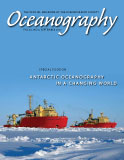First Paragraph
The southwest coast of Anvers Island harbors one of five major populations of Adélie penguins in the West Antarctic Peninsula (WAP; Fraser and Trivelpiece, 1996). This “hotspot” is colocated with a submarine canyon that provides a conduit for warm, nutrient-rich Upper Circumpolar Deep Water to stimulate primary production and support a productive ecosystem (Prézelin et al., 2004). Paleoecological evidence shows Adélie penguins (Pygoscelis adeliae) have used this location for hundreds of years (Emslie et al., 1998). Since the mid- to late twentieth century, the Southern Ocean near the WAP has warmed significantly (Gille, 2002) and has lost significant sea ice (Stammerjohn et al., 2008). The maritime climate of the northern WAP has shifted poleward, replacing the cold continental Antarctic climate in the Anvers Island region. During this time period, there has been an 80% decrease in the sea ice dependent Adélie penguin populations and an introduction and increase of Gentoo penguins (P. papua; Ducklow et al., 2007). Sympatry of Adélie and Gentoo penguins during the breeding season is new to this coast, and it not known if these species will continue to coexist or if the Gentoos will supplant the Adélies. The stability of this new species interaction depends on how well each species is able to exploit the coastal ecosystem. It may be that while submarine canyons offer predictable prey populations, different foraging strategies may allow Gentoos better access to existing prey (krill and fish) populations relative to Adélies. This situation is difficult to assess because penguins are dynamic predators that rapidly forage for krill and fish across a heterogeneous and complex coastal ocean.

